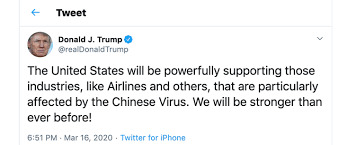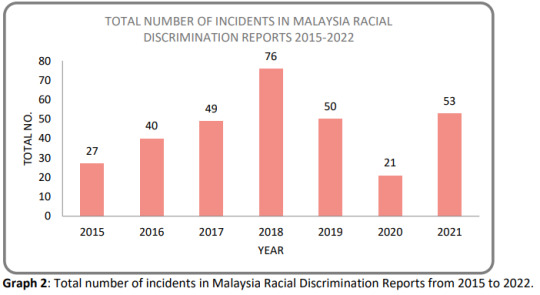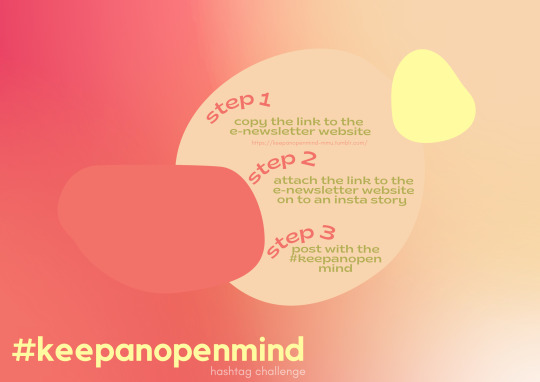Text
Discrimination
Introduction
Discrimination is the act of mistreating a person unfairly based on their race, gender, sexuality, etc. The act can be motivated due to negative prejudicial attitudes towards an individual or group of people. It can also be influenced by stereotypes created from personal experience or the media. For instance, a company provides more opportunities for male workers to gain a promotion rather than female workers. This is a discriminatory act based on the gender of an individual.
Types of discrimination
Discrimination can take many forms, here are a few examples:
Race/Ethnic Discrimination
This type of discrimination occurs when one is treated unfairly based on their race or ethnicity. Mostly commonly, victims of this discrimination are those who are targeted due to their physical appearance like skin colour. Acts of harassment driven by race or ethnic discrimination could manifest through racial slurs, derogatory statements, and offensive symbols.
Workplace Discrimination
Workplace discrimination arise when selected employees are treated poorly due to their age, gender, race, social status, etc. Examples of this could be employees are not underpaid, denied from promotions, work load, and rejected during the hiring process. All motivated because the person is a specific race, gender, disability, etc.
Religious Discrimination
Religious discrimination occurs when someone is being disfavoured because of their faith. The severity of this type of discrimination varies. In most cases, victims would face offensive statements from others. On the other hand, there are cases where religious discrimination lead to the death of victims.
Why is discrimination harmful?
Discrimination can negatively impact society: lower employment rates, economic success, tension between groups, and even death. As previously mentioned, there are several criminal cases due to religious discrimination. One striking example is the Christchurch massacre in 2019, where a man murdered 51 people in 2 mosques in New Zealand. His motive for the crimes was driven by his hatred towards Muslims. The court sentenced him for life in prison. This is to show the severity of discrimination and how it could lead to deaths of innocent people.

Image photographed by Mick Tsikas, exhibiting a muslim man praying upon the memorial for the innocent victims of the Christchuruch massacre.
(https://www.theguardian.com/world/2019/oct/03/christchurch-massacre-defence-lawyers-drop-request-to-move-trial-away-from-city)
Furthermore, multiple studies have proven that discrimination can negatively impact an individual’s mental health. Creating more stress which can lead to anxiety and depression. Take it for example, a study conducted in the Study of Women Across the Nation (SWAN), discovered that women who experience frequent discrimination have higher levels of depression. This was evident for all women from different cultural or ethnic backgrounds. Hence, reducing discrimination must be prioritizes.

Similar to the previous e-newsletters discussing racism, stereotypes, and prejudice, the approach to prevent each issue is by being more open minded. This means we should be interacting more with people of different cultural backgrounds. Being respectful and understanding of each other’s values and beliefs. Perceiving people as individuals over their social categorization.
This 2017 video posted by the NewHope Church, shows us when we put people into boxes or categories, we overlook how as humans we are all equal, we have similarities, and we are all the same.
youtube
(https://www.youtube.com/watch?v=zRwt25M5nGw)
#keepanopenmind Hashtag Challenge
Big thanks towards the users who participated in the hashtag #keepanopenmind challenge, to spread the message about respecting and embracing all cultures! Below are some Insta stories posted by the audience:

Thank you for supporting a good cause!
Let’s Get Personal
Thank you to those who filled the forms, giving a personal insight about the topics discussed in the E-newsletters! Below is the link to the result of the forms:
Stereotypes in Films and Media
Prejudice
Link to Sources Document
1 note
·
View note
Text
Prejudice
Introduction
Prejudice is to cause damage towards another person based on judgement. Prejudice can lead to discrimination and racism, if people act on their judgment. They possess the ability to cause harm towards an individual or group, as it reduces the value of a person. An example of prejudice is harboring negative attitudes towards immigrants or foreigners.
Why do we form prejudice?
If prejudice can lead to discrimination and racism, then why do we form prejudice? The formation of prejudice varies, there are numerous factors that lead to holding prejudice towards others.
Upbringing
The upbringing of a person can influence the formation of prejudice. If a family member has their own prejudices, it is possible for those ideals to be reinforced onto their children.
Stereotyping and social categorization
Based on an experience with a person or influence from the media, can encourage people to treat or think negatively about others. An article about Current Directions in Psychological Science, states that people who are prone to make generalizations and form stereotypes about others, are most likely to have prejudice.
History
The impact of historical events could encourage prejudice. As an example, the unfortunate event of 9/11, where an Islamic extremist group attacked the World Trade Center in New York City, killing nearly 3000 people. In response to the terrorist attack, various people have negative attitude towards Muslims, also known as Islamophobia.

Photographed by Spencer Platt, showing the terrorist attack of the World Trade Center on September 9, 2001.
(https://www.vox.com/2016/9/9/12839824/9-11-anniversary-terrorist-attack-safer-today)
Why is having prejudice harmful?
As previously mentioned, prejudice can be harmful. When prejudice is widely spread on a large scale, through the media, TV series, and social media. As it is repeated multiple times, it can reinforce the prejudicial ideals towards the wider audience. Negative prejudices create tensions between groups, resulting in unfair treatments towards a group of people based on their background, race, and gender. For instance, the presence of disability prejudice in systems makes it harder for people with disabilities to find employment. Even when employed, they could experience workplace discrimination.

To reduce prejudice in society, we should:
Interact with other people from different backgrounds
Multiple studies have shown that friendships with people from different cultures or backgrounds can help reduce prejudice. It is more effective when the individuals have a common goal or social status. For example, creating friendships with other co-workers from opposite cultures. Studies show that friends who work with each other to achieve a goal like studying for a test together or working on a project, will further reduce prejudice.
2. Be more emphatic
If you were to imagine yourself in the other person's shoes, then it’s highly likely you would not be prejudicial towards them. It will help you understand their feelings and how they would react if another person were to be prejudicial against them. Being more empathetic towards those who are victims of prejudice can reduce prejudice.
3. Change government legislation
Once gain, encouraging laws that will treat people fairly will reduce prejudice. One of the reasons why prejudice is harmful is due to the restrictions set up by our society and the government. In the advanced world of technology, we should use our access to social media and wide communication to spread the message - to reduce prejudice.
Let’s Get Personal
Below you will find a form where you can answer questions about prejudice:
https://forms.gle/oACdpUifT1brwpL38
Link to Sources Document
0 notes
Text
Stereotypes in Media
Introduction
A stereotype is an oversimplified image of someone or something that is represented in a prejudicial, discriminatory, and uncritical manner. The media is one of many outlets that can form stereotypes, and have a great influence on individuals and society.
The information presented in the media has the ability to create common knowledge of a norm. As more people consume the media, they are more likely to believe or accept the norm. Thus, forming stereotypes based on the information represented in the media.
Stereotypes in Films
Films are known to have a great influence on an individual's perception of the world. Particularly, creating ethnic and gender stereotypes, altering an individual’s behavior towards a specific group. Racial stereotypes date back to the beginning of the Hollywood industry, as an example, the 1961 classic film - Breakfast at Tiffany’s.
In that film, an Asian character named Mr.Yunioshi, who was played by a white American actor, spoke in English but with a typical Japanese accent. Overall, mocking Japanese people and creating the stereotype that all Japanese who speak English communicate with such an accent. Many Asian characters represented in old Hollywood films would have typical accents along with laughable characteristics.
Along with other minority groups in America, various African-American characters in films are portrayed as aggressive, loud ,and sassy. This stereotype is still seen in present films and TV series.

Image of Mr.Yunioshi played by Mickey Rooney, taken from the 1961 film, Breakfast at Tiffany’s.
(https://www.wsj.com/articles/BL-SEB-80668)
Simultaneously, films also form gender stereotypes. In the past, several American films would portray female characters as “damsel in distress” or “a needy girl”. Specifically, the infamous James Bond films where the female characters are saved from a hostage situation by the male lead. Commonly, the women would be portrayed sexually.
They are often written for that sole purpose - a victim in need of help. Whereas, other female characters in romantic comedies, would play the role as an individual who is only motivated to get the opposite gender’s attention. Her only characteristic is to appeal towards the male love interest.

Image taken from the 1990 film, Pretty Woman.
In this film, the female character is “saved” from her financial troubles by the male love interest.
(https://www.independent.co.uk/arts-entertainment/films/features/pretty-woman-julia-roberts-richard-gere-shopping-scene-restaurant-a9413636.html)
When films represent these negative stereotypes towards an audience, studies show that people are more likely to be prejudicial towards the ethnic group or are expected to act the same way as the characters on screen.
Stereotypes in Social Media
The ethnic and gender stereotypes in social media are depicted similarly to films and TV series, strictly speaking social media re-enforces these stereotypes. For instance, the prejudice and racism against the Chinese community during the peak of COVID-19. Former U.S president, Donald Trump, often associated the Coronavirus as a “Chinese Virus”, as the virus originated from China. Consequently, many social media users on Twitter posted racist statements along with the hashtag - #ChineseVirus.
Implying that every Asian or Chinese person carries the virus. This type of negative stereotype can be extremely harmful. A study conducted by California State University, San Bernardino, discovered a 169% increase of anti-Asian hate crime in 2021. Around 20% of the 169% could be caused due to the stereotype against the Chinese community. Showing the severity of adopting and acting upon a stereotype against a specific group.

Image of Donald Trump’s tweet in 2020, regarding the CoronaVirus.
(https://www.theatlantic.com/ideas/archive/2020/03/2020-time-capsule-5-the-chinese-virus/622116/)
Why do we form stereotypes and why is it harmful?
In order to avoid acting on stereotypes, we must understand how stereotypes are formed and why they are harmful. Looking through a psychological lens, stereotypes are shaped to make our understanding of the world and society easier. Stereotypes can aid us in responding quickly to a situation based on our own experiences, however it also can strip away our perception of individuals. We end up looking at other people as a collective rather than an individual.
Moreover, bias such as confirmation bias can reinstate stereotypes. Confirmation bias is the inclination to process information or people according to your own beliefs. As humans, we use confirmation bias as a defense mechanism to protect our self-esteem. We prefer to feel good about ourselves, when we discover the stereotypes we place upon others fail to meet our expectations, it does not feel so good.
Negative stereotypes have various negative effects on others. Before all else, stereotypes promote the perception of social categorization. To regard a person’s behavior based on their race, gender, or religion, rather than as an individual. Instead we should be learning about the individual's beliefs and interests, not every person from that social categorization behaves the same way.
This closed off mind set can impact one’s way of living, as an example, African-American children are more likely to be encouraged to participate in sports or the entertainment industry, in contrast to, pursuing a higher education or working in S.T.E.M. Therefore, acting on stereotypes must be prevented.

Thus, how can we prevent stereotyping and acting on it?
Broaden your horizon
By being more open-minded, meeting with new people from different cultures can help you overcome stereotypes.
2. Get to know each other as individual
Maintaining the mindset of perceiving others as individuals rather than as a collective, will help you understand and learn about other people for who they are. Not for the characteristics placed upon them by the media or personal experience.
3. Ignore stereotypes
Ultimately, when you see a stereotype in films or the media, it is better to reflect upon it. Critically assess what is seen upon you and to understand that people are individuals.
Let’s Get Personal
Below you will find a form where you can answer questions about stereotypes in film and media:
https://forms.gle/tQ9SR45GvFKam43VA
Link To Sources Document
0 notes
Text
Why is Racism Harmful?
Introduction
Racism is a belief that an individual's race determines their human traits and actions as well as that racial differences allow a specific race to be superior to others. The act of racism is not a new phenomenon, in fact it is too common. Racism can occur anywhere, from schools to workplaces.
The media might portray racism to only exist in America, when in fact most countries experience it. Even if, the issue is miniscule compared to the events broadcasted on the news, if one is experiencing discrimination because of their race - then that is racism. This is why racism is considered a global issue.

Joseph, Tam. Spirit of the Carnival. 1982, Wolverhampton Art Gallery, Wolverhampton.
This acrylic on canvas piece was a depiction of the severe police brutality against people of colour in London at the time.
(https://www.bbc.com/culture/article/20220128-black-british-experience-laid-bare)
Racism in Malaysia
After, Malaysian gained their independence in 1957, the dominant ethinc group was the Malays. Other ethnic groups - the Chinese and Indian Malaysians who immigrated to the country before the independence, are treated unfairly in various manners even till this day. Malaysia’s racial hierarchy and the ethinc divide between the groups has caused several conflicts and political challenges in the nation.

An image of Tunku Abdul Rahman, the Duke of Gloucester, the Yang Di-Pertuan Agong during the Proclamation of Independence in 1957.
https://www.nst.com.my/opinion/columnists/2017/08/266008/sixty-years-and-growing
In 1969, Malaysia would face its worst racial riots in history, also known as the ‘May 13 incident’. As a result of the riot, hundreds of people were killed and injured as Malays and Chinese violently brawled on the streets of Kuala Lumpur.
Prior to the incident, various political tensions between ethnic parties were set in place as elections began. More specifically, the Alliance party led by the United Malays National Organisation (UMNO) and the Chinese political parties like the Malayan Chinese Association (MCA).
For a long time, UMNO had the upper-hand in the government. For example, under the Education Act 1961, a legislative act established by the UMNO’s influence, educational institutions were required to conduct their lessons exclusively in Malay and English.
Though, the Chinese and Indian committees were allowed to educate the students using their own languages in primary schools. However, everyone was required to study the ‘Malayan curriculum’. Various education institutions provided better treatment towards Malay students rather than Chinese and Indian students.
As elections came to a close, the Alliance party felt threatened by the Chinese parties as they were slowly gaining more voters and support - this added more fuel to the ethnic tension. Because of this, many Chinese and Malays came out to the streets prepared to start a riot as they were unsatisfied with the outcomes of the election.


Images taken from the book ‘May 13: Before and After’ by Tunku Abdul Rahman, showing moments before the violent riot.
(https://pages.malaysiakini.com/may13/en/)
Following the events of the ‘May 13 incident’, many have learned to respect and treat one another fairly regardless of their ethnic background. The government established new restrictions and legislation created to avoid events or ethnic riots. Nevertheless, this did not solve Malaysia’s racism issue.

Taken from the “Malaysia Racial Discrimination Report 2021”.
(https://komas.org/download/Malaysia-Racial-Discrimination-Report-2021.pdf)
The “Malaysia Racial Discrimination Report 2021” showed racial incidents double more from 21 in 2020 to 53 in 2021. Of the incidents reported, the greatest percentage involved racial and religious politics (28%) and the lowest pecentaged involved racial discrimination in the business industry (6%).
One of the incidents included in the report was the event that occured on April 8 2021. The home minister, Hamzah Zainudin ridiculed fellow human rights advocates as they spoke up about the government’s treatment towards detained undocumented migrants before deportation. Hamzah Zainudin responded to NGO’s asking them if they were prepared to be responsible for the cost of their housing and meals to feed the immigrants in detention areas.
Proving the severity of the incidents and racism in Malaysia.
Why is racism harmful?
Racism is a global issue that needs to be prevented, as many countries throughout the globe deal with issues revolving around racism. In Europe, issues of racism arise mostly from tensions with foreign immigrants. For example, in 2010, several African farmers faced a wave of violence as 70 were left injured in the south of Italy.
At the same time, Switzerland has been toughening asylum and immigrations policies, as the number of immigrants increases. Moreover, several countries in Africa have displayed evidence of racism. In Zimbabwe, several white farmers faced racial discrimation as they were living in poverty and lacked land ownership.
So, why is racism harmful? First, racism can promote acts of violence towards others or the worst case scenario - death. For instance, a 14 year old boy in Brazil was brutally shot by a federal police whilst playing outside in 2020.Young Pedro was one of many victims to murderous violence of young black boys and girls in Brazil.
Additionally, the Black communities in Brazil are treated poorly. They work low-wage jobs, live with low or no access to clean water, and are discriminated against in healthcare facilities and services. Demonstrating how racism can affect one’s way of living.

Photographed by Ricardo Moraes, exhibiting the father of João Pedro Matos Pinto at his son’s funeral.
(https://www.theguardian.com/world/2020/jun/03/brazil-black-lives-police-teenager)
Secondly, racism can impact an individual's health negatively, both mentally and physically. Around 300 studies were analysed by fellow academicians about the effects of racism on physical and mental health in 2015. According to the studies, stress caused by experiencing racism can develop into long-term conditions. For instance, individuals are more likely to get high blood pressure due to stress.
Damaging behaviours such as drug use, excessive abuse of alcohol, and smoking can be encouraged as a result of stress. Furthermore, the study discovered people who experienced racism are more likely to develop mental health issues like depression, anixety, suicidal thoughts, and post-traumatic stress disorder (PTSD).
Let’s Get Personal
I personally interviewed a local Malaysian as they answered a few questions about racism in Malaysia.
What is your nationality or which ethnic group are you from?
Local Malaysian: I’m from Malaysia - Bumiputera.
What are your thought’s Malaysia’s racism and have you experienced or witnessed it?
Local Malaysian: I think that racism is a taboo topic in Malaysia. Although one of the ‘best’ aspects of our country is being multicultural, it is ironic considering that there is underlying racism within the ethnic groups. Racism within Malaysia is evident within social media and the older generations with people stereotyping certain ethnic groups
What advice or ways would you give to prevent racism?
Local Malaysian: Racism is something that will be always prevalent and rooted in people. The only advice I could give to ‘prevent’ racism is to educate what is wrong.

If racism is so harmful, how do we prevent it?
Understand and acknowledge racism
Many people state to disagree with racism but are unable to identify what it is, people who experience racism might perceive it as a misunderstanding. Manipulated to think their experience is an insignificant incident. In order to prevent racism, people must be able to identify what is considered to be racism, to give people a voice and to fight against racism.
2. Eradicate discriminatory laws
Removing laws that negatively impact specific races is vital to prevent racism. For example, in China, the Guangzhou government established a law where all African nationals were put into harsh surveillance and forced quarantine as a response to Covid-19. Systemic racism makes it harder for people to fight against racism. For minority races to escape poverty, receive good education, and get jobs. Thus, racist or discriminatory laws must be eradicated.
3. Commit to spreading the word of anti-racism
To eradicate discriminatory laws, issues of racism needs to acknowledged by society. Participating or creating movements to spread the message of anti-racism can catch the attention of many. Especially with our new world of social media, we can utilise the platform to further spread awareness.
Take it for example, the #Black Lives Matter movement. Various police brutality incidents towards African-Americans sparked up the need for the movement such as the unfortunate death of George Floyd.
The movement’s goals were to create a political-social action to eradicate racially motivated policies and legislations against African-Americans. Therefore, as we live in a world of innovative technology and social media, we can make a difference to help minority races and end racism.
#keepanopenmind Hashtag Challenge
One way we can spread awareness about being knowledgeable and respectful towards other cultures is by participating in the #keepanopenmind hashtag challenge. Refer towards the image below to learn how to participate in the challenge!

Link To Sources Document
0 notes